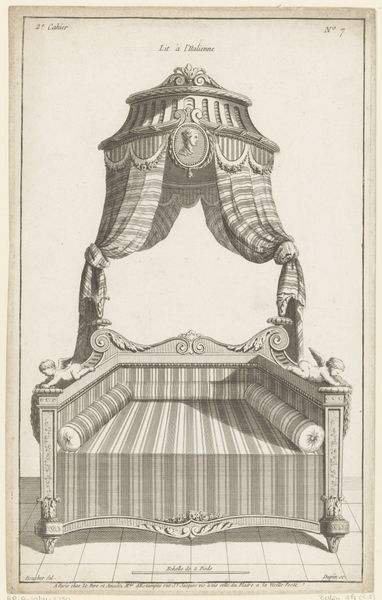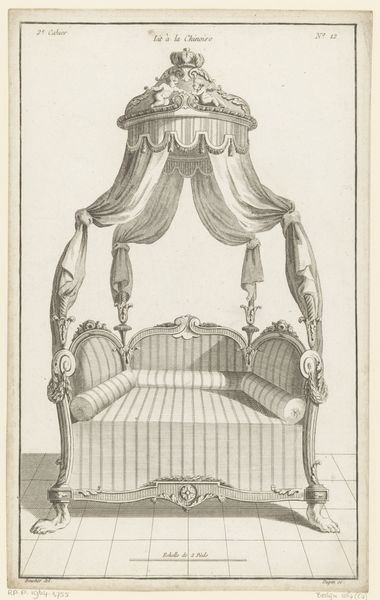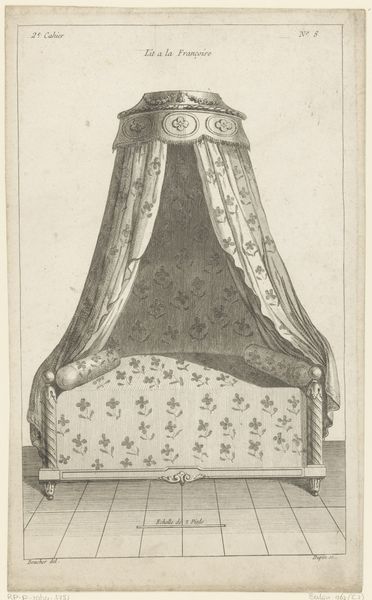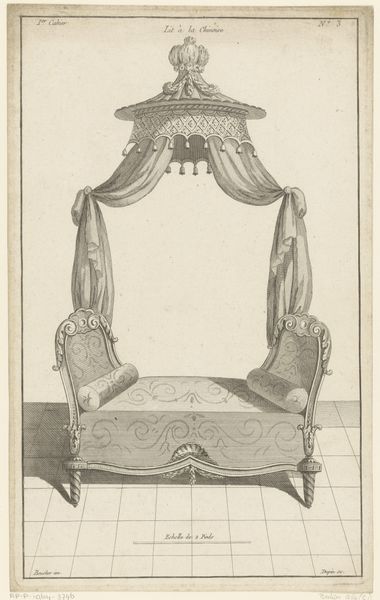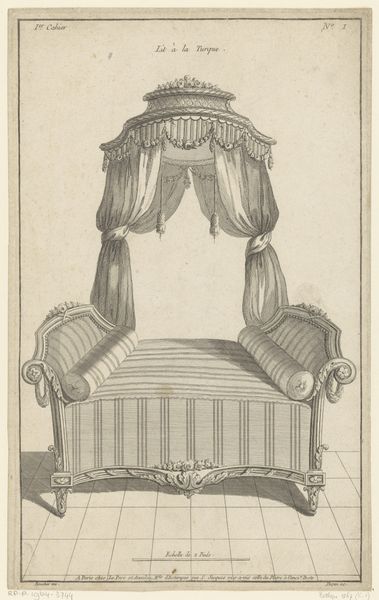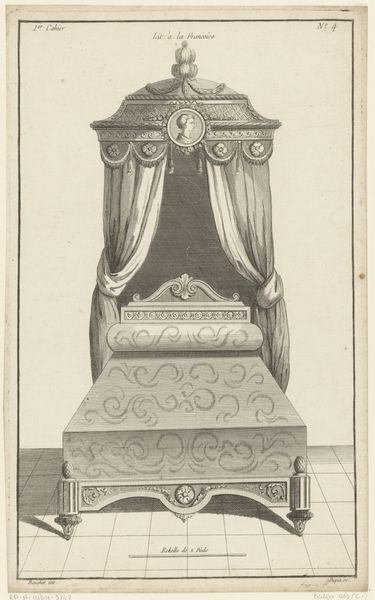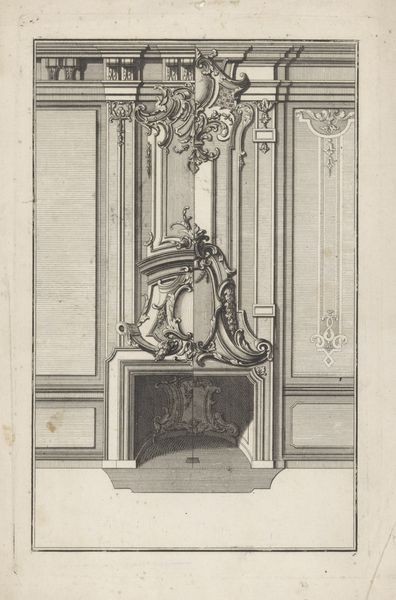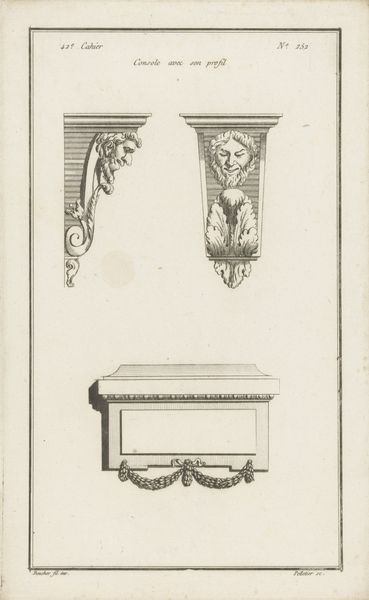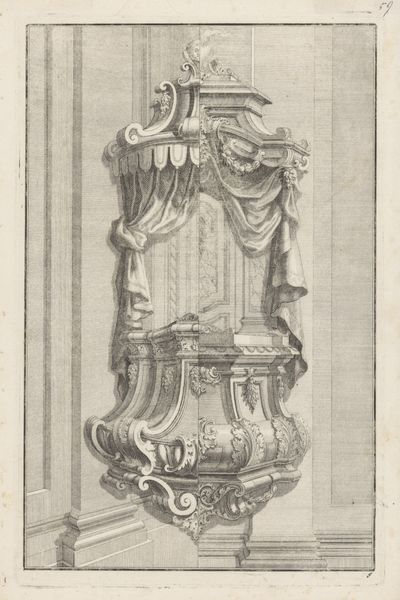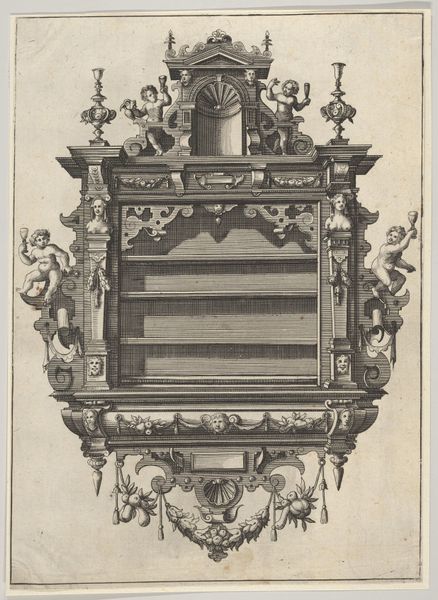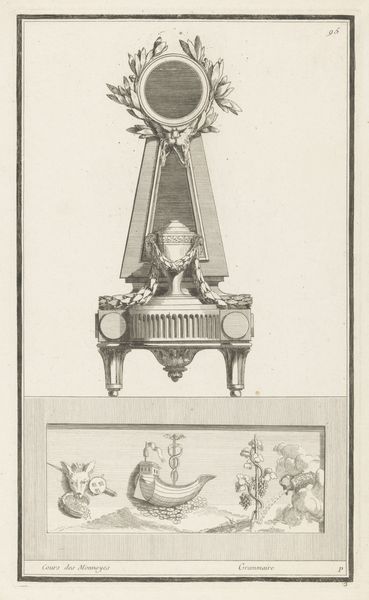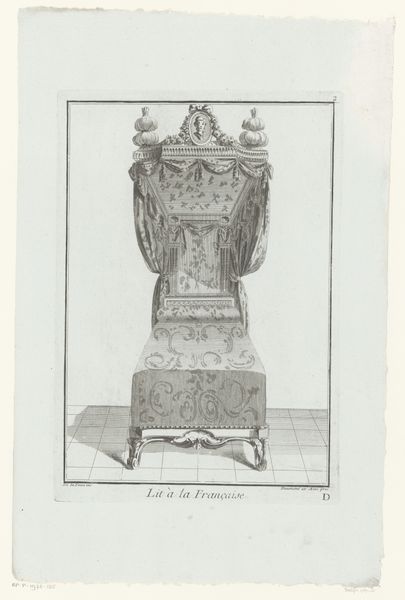
print, engraving, architecture
#
neoclacissism
# print
#
decorative-art
#
engraving
#
architecture
Dimensions: height 329 mm, width 202 mm
Copyright: Rijks Museum: Open Domain
Nicolas Dupin created this print of a 'Hemelbed met rookvat', or a four poster bed with a censer, sometime in the late 18th century. The censer, usually filled with incense, speaks to a world of ritual and opulence that characterized the lives of the wealthy during this period. Consider the context: Dupin was working in a society on the cusp of revolution. This print offers a glimpse into the private chambers of the elite, a space adorned with luxurious fabrics and ornate details that would have been inaccessible to the majority. What did it mean to produce images of such extravagant consumption during a time of growing social unrest? Perhaps this print was an aspirational object or a subtle form of social critique, mirroring the disconnect between the monarchy and the common person. The image reminds us that every object carries with it a history of social relations, power dynamics, and the complex desires of its time.
Comments
No comments
Be the first to comment and join the conversation on the ultimate creative platform.
